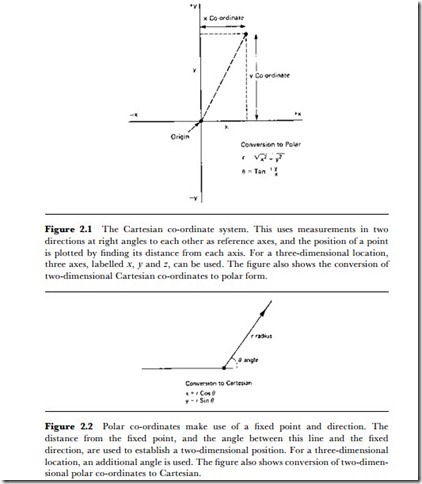Position
Position, as applied in measurement, invariably means position relative to some point that may be the Earth’s north pole, the starting point of the motion of an object, or any other convenient reference point. Methods of determining position make use of distance and direction (angle) information, so that a position can be specified either by using rectangular (Cartesian) co-ordinates (Figure 2.1) or by polar co-ordinates (Figure 2.2). Position on flat surfaces, or even on the surface of the Earth, can be specified using two dimensions, but for air navigational purposes three- dimensional co-ordinates are required. For industrial purposes, positions are usually confined within a small space (for example, the position of a robot tug) and it may be possible to specify position with a single number, such as the distance travelled along a rail.
In this chapter we shall look at the methods that are used to measure direction and distance so that position can be established either for large- or small-scale ranges of movement. There are two types of distance sensing: the sensing of distance to some fixed point, and the sensing of distance moved, which are different both in principle and in the methods that have to be used. The methods that are applied for small-scale sensing of position appear at first glance to be very different, but they are in fact very similar in principle.
Since position is related to distance (the difference between two positions), velocity (rate of change of position) and acceleration (rate of change of velocity), we shall look at sensors for these quantities also. Rotational movement is also included because it is very often the only movement in a system and requires rather different methods. In addition,
of course, the rotation of a wheel is often a useful measurement of linear distance moved.
